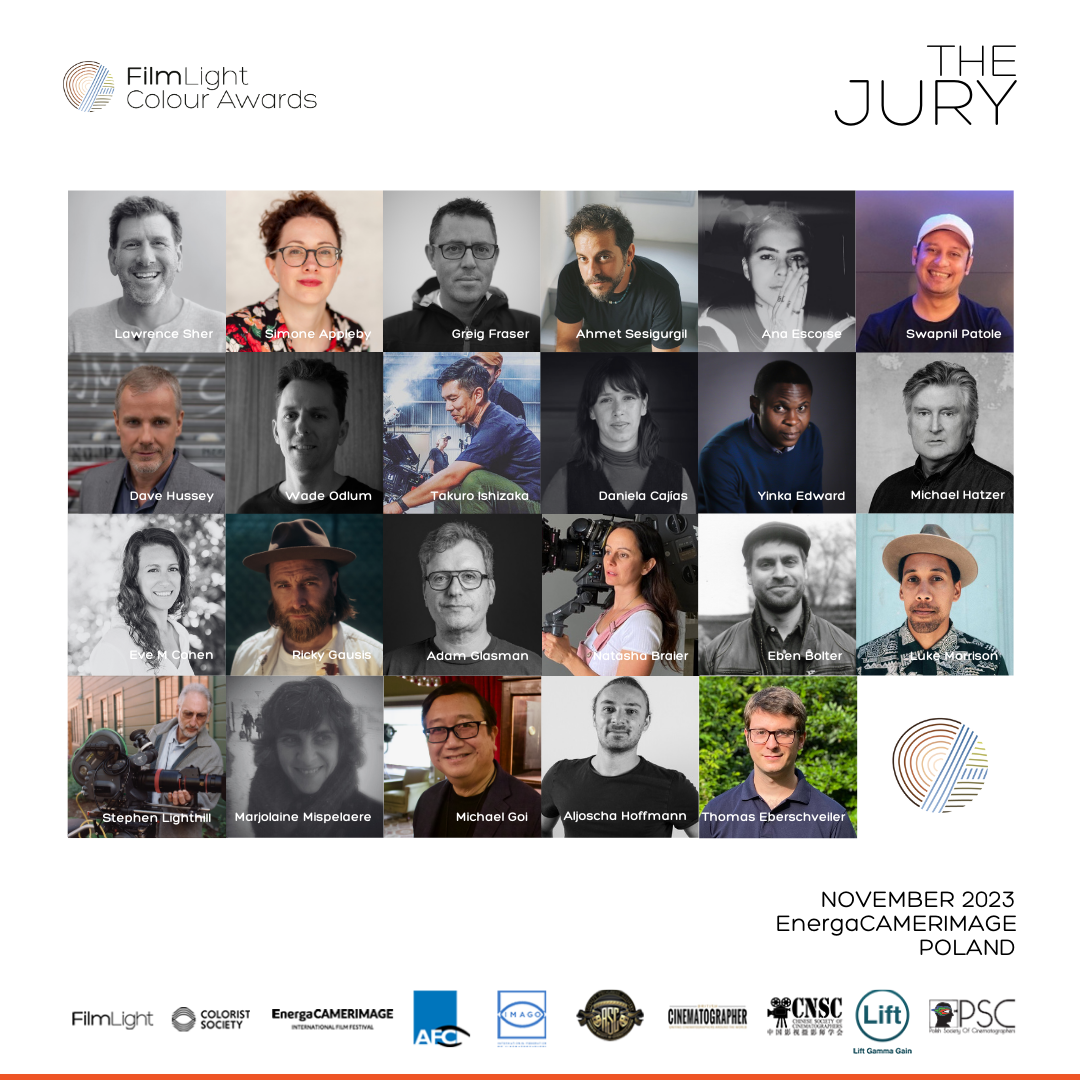FilmLight has finalised the 2023 FilmLight Colour Awards jury, made up of high-profile creatives from across the world, and appointed renowned cinematographer, Lawrence Sher, ASC, as this year’s president. Due to popular demand, the awards deadline has also been extended, with submissions now closing to the global colourist community at 23:59 BST on 7 August 2023.
The FilmLight Colour Awards are open to colourists on any grading platform and entries are judged by an independent panel of cinematographers, colourists and creatives who bring their understanding of how an image is made, and how its light and shade creates a mood and a dynamic.
Lawrence Sher, ASC, is an award-winning American cinematographer and film director best known for his work on Joker (2019), Godzilla: King of the Monsters (2019), War Dogs (2016), The Hangover (2009), Garden State (2004) as well as Dua Lipa’s music video, Don't Start Now (2019).
“I’m very excited to be president of the FilmLight Colour Awards,” comments Sher. “Colouring and colourists are as fundamental to modern filmmaking as any lighting or camera tool. As someone who started their career colour timing movies the ‘old fashioned’ way, I was an early adopter and champion of the Digital Intermediate as I could see its potential.

“I believe the colour tools we have today are perhaps (along with the digital sensor) the most transformative change in filmmaking in the last 50 years. My relationship and collaboration with my colourists is as important as any relationship I have with my camera, grip and lighting teams. I am very excited to see the great work from this year’s submissions and shine a spotlight on their creative inputs to their projects.”
The final 2023 FilmLight Colour Awards jury is as follows:
Lawrence Sher, ASC, Cinematographer & Film Director; Greig Fraser, ACS, ASC, Cinematographer; Natasha Braier, ASC, ADF, Cinematographer; Simone Appleby, Head of Film & Digital Restoration Lab, CNC; Eben Bolter, BSC, Cinematographer; Daniela Cajías, AEC, Cinematographer; Eve M Cohen, Cinematographer; Thomas Eberschveiler, Image Workflow Supervisor, MPC Paris; Yinka Edward, Cinematographer; Ana Escorse, Senior Colourist; Ricky Gausis, Senior Colourist & Creative Partner, TRAFIK; Adam Glasman, Senior DI Colourist, Goldcrest; Michael Goi, ASC, ISC, Cinematographer & Film Director; Michael Hatzer, VP of Creative Colour Finishing, Picture Shop; Aljoscha Hoffmann, Senior Colourist; Dave Hussey, Senior Colourist, Company 3; Takuro Ishizaka, JSC, Cinematographer; Stephen Lighthill, ASC, Cinematographer & Head of Discipline, Cinematography at the American Film Institute (AFI) Conservatory; Marjolaine Mispelaere, Senior Colourist; Luke Morrison, Head of Colour, Electric Theatre Collective; Wade Odlum, Senior Colourist & Partner at alter ego; Swapnil Patole, Chief Colourist, Famous Studios; Ahmet Sesigurgil, Cinematographer.
Award-winning Australian cinematographer ACS, ASC, Greig Fraser – Zero Dark Thirty (2012), Lion (2016), Dune (2021), The Batman (2022) and more – comments: “We live in a space where often films are based on a trend or previous ideas. In this year’s Colour Award entries, I’m looking for original vision.”
Jacqueline Loran, Director at FilmLight, commented: “I have worked with colourists across the world for many years and I know how hard working and creative the community is. They are crucial to the creation of great visual content and we are honoured to be able to provide them with a platform to receive the recognition that they truly deserve.”
“We’ve been overwhelmed by the response and support for the awards so far and we are incredibly grateful to everyone involved, including the talented jury, without which the awards could not take place,” says Loran.
The call for entries will now close on Monday 7 August 2023. A shortlist will be announced in the autumn, with the winners unveiled in November at EnergaCAMERIMAGE.
The Colour Awards are lead and organised by FilmLight, in conjunction with EnergaCAMERIMAGE, and are supported by prominent international groups such as the ASC (The American Society of Cinematographers), the BSC (British Society of Cinematographers), the AFC (The French Society of Cinematographers), CSI (Colorist Society International), CNSC (Chinese Society of Cinematographers), Imago (the International Federation of Cinematographers), the Polish Society of Cinematographers (PSC) and more.
For more information or to enter, visit: www.filmlightcolourawards.com/
